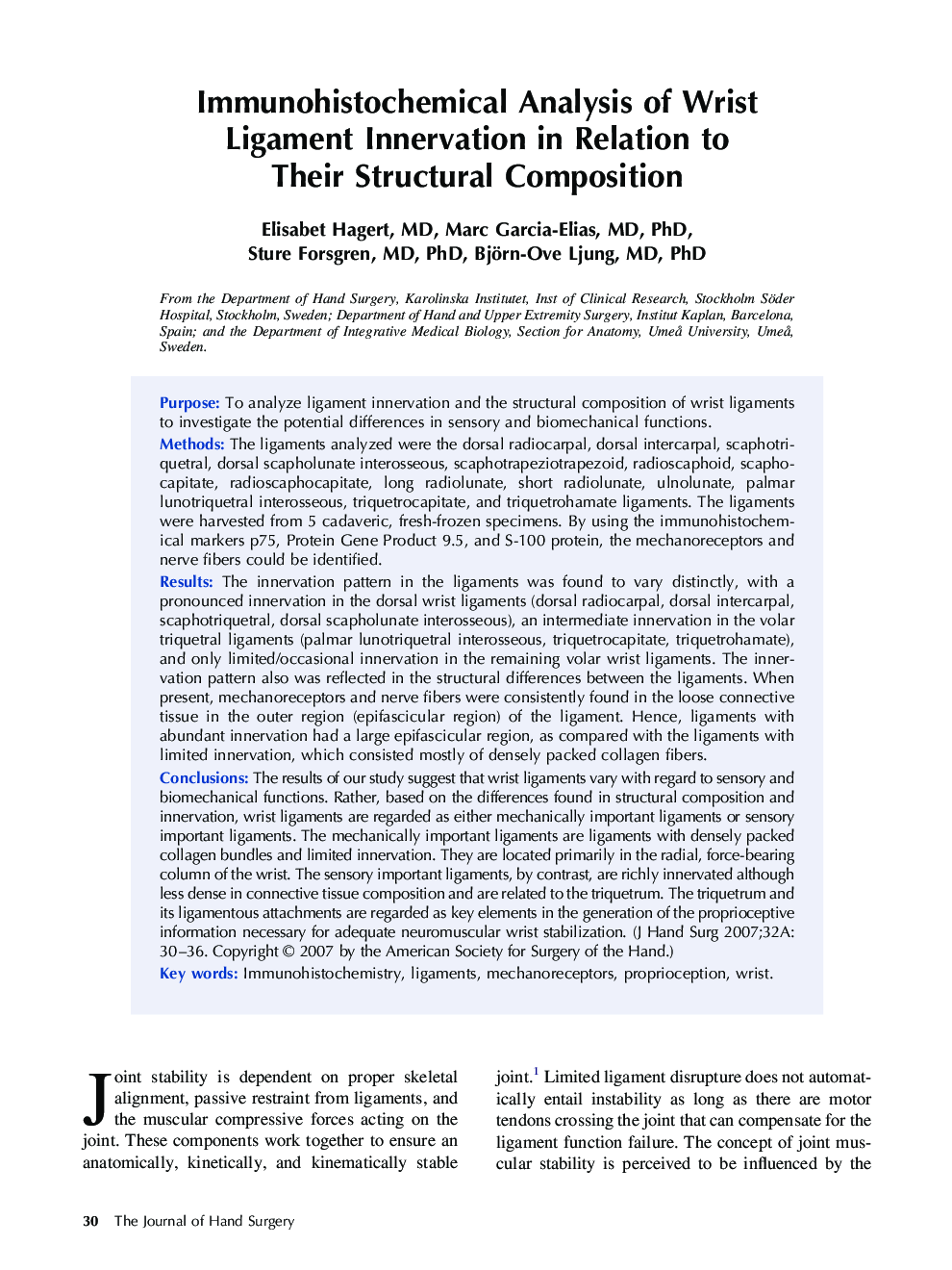| کد مقاله | کد نشریه | سال انتشار | مقاله انگلیسی | نسخه تمام متن |
|---|---|---|---|---|
| 4071215 | 1604457 | 2007 | 7 صفحه PDF | دانلود رایگان |

PurposeTo analyze ligament innervation and the structural composition of wrist ligaments to investigate the potential differences in sensory and biomechanical functions.MethodsThe ligaments analyzed were the dorsal radiocarpal, dorsal intercarpal, scaphotriquetral, dorsal scapholunate interosseous, scaphotrapeziotrapezoid, radioscaphoid, scaphocapitate, radioscaphocapitate, long radiolunate, short radiolunate, ulnolunate, palmar lunotriquetral interosseous, triquetrocapitate, and triquetrohamate ligaments. The ligaments were harvested from 5 cadaveric, fresh-frozen specimens. By using the immunohistochemical markers p75, Protein Gene Product 9.5, and S-100 protein, the mechanoreceptors and nerve fibers could be identified.ResultsThe innervation pattern in the ligaments was found to vary distinctly, with a pronounced innervation in the dorsal wrist ligaments (dorsal radiocarpal, dorsal intercarpal, scaphotriquetral, dorsal scapholunate interosseous), an intermediate innervation in the volar triquetral ligaments (palmar lunotriquetral interosseous, triquetrocapitate, triquetrohamate), and only limited/occasional innervation in the remaining volar wrist ligaments. The innervation pattern also was reflected in the structural differences between the ligaments. When present, mechanoreceptors and nerve fibers were consistently found in the loose connective tissue in the outer region (epifascicular region) of the ligament. Hence, ligaments with abundant innervation had a large epifascicular region, as compared with the ligaments with limited innervation, which consisted mostly of densely packed collagen fibers.ConclusionsThe results of our study suggest that wrist ligaments vary with regard to sensory and biomechanical functions. Rather, based on the differences found in structural composition and innervation, wrist ligaments are regarded as either mechanically important ligaments or sensory important ligaments. The mechanically important ligaments are ligaments with densely packed collagen bundles and limited innervation. They are located primarily in the radial, force-bearing column of the wrist. The sensory important ligaments, by contrast, are richly innervated although less dense in connective tissue composition and are related to the triquetrum. The triquetrum and its ligamentous attachments are regarded as key elements in the generation of the proprioceptive information necessary for adequate neuromuscular wrist stabilization.
Journal: The Journal of Hand Surgery - Volume 32, Issue 1, January 2007, Pages 30–36